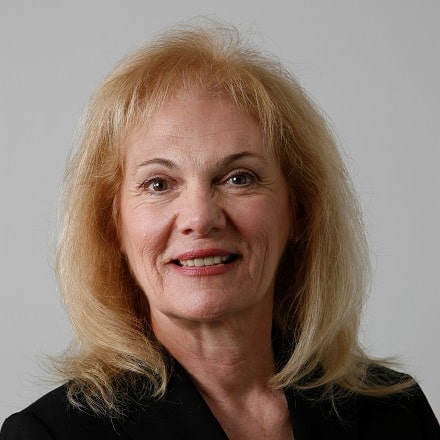Inside Angle
From 3M Health Information Systems
Transparency in healthcare pricing: It’s time
In my last blog, I commented on being overcharged by my PBM for a medication that had been removed from their formulary – allegedly because the FDA pulled some old stand-by medications from the market because of out-of-date testing. My PBM no longer covers the medication, but they offered to sell it to me at an outrageously inflated cash price. Why, you ask? Because they still have stock!
After that experience, I began to read more closely the latest on CMS’ actions regarding pricing transparency in healthcare. I found the following statements by Health and Human Services (HHS) Secretary Alex Azar II on this topic interesting. The statements were made following his hospitalization for diverticulosis. From a recent Healthcare Financial Management Association (HFMA) e-newsletter article by Rich Daly1:
“The experience did bring home for me how challenging it is to be a patient,” Azar said. “And it reminded me how much information and data are required to deliver the right treatment.”
The administration has four key areas that it aims to address with the pharmaceutical policy push, Azar said:
–High list prices set by manufacturers
–Overpayment for drugs by seniors in government programs due to a lack of up-to-date negotiating tools
–Rising out-of-pocket costs for consumers
–Foreign governments that freeload off of American investment and innovation
“HHS’s blueprint for addressing these challenges will build on the proposals put forth in the president’s FY19 budget and the actions he has already taken,” Azar said. “But he wants to go much, much further.”
Beyond the focus on drug prices, Azar underscored his increasing push regarding price and quality transparency.
“For individuals to drive value, they must have access to data on price and quality,” Azar said. “Knowing prices and outcomes can then enable every American to find better, cheaper health care.”
He noted that CMS sought information on several other transparency initiatives, such as ways to address “surprise billing.”
“It’s not an exaggeration to say that just about every hospital bill in America today is a surprise bill for folks,” Azar said. “Every time I check the mail I have a new bill come in from my recent experiences.”
Patients have a right, Azar said, to know what a procedure costs for providers and for them. He urged provider input to create such transparency and promised to highlight organizations that provide helpful transparency.
My Take
For the record, this is not a policy or political endorsement. Second, there is nothing like being a patient in the healthcare system to get the attention of the folks running it. “Patienthood” is a special, eye-opening experience.
In 2006, I wrote a book with a colleague regarding retail healthcare pricing and the need for transparency. Fast forward 12 years and little has changed other than increased agreement regarding the idea that consumers have a right to know how much medical stuff is going to cost them – in advance – so they can determine how to spend their healthcare dollars. Additionally, they are entitled to help with confusing bills and charges. What happens to folks who are not CMS or HHS officials or healthcare workers? Where do they go when they have questions? Who guides them to even know what to ask?
I can share how dismayed I was the first time I saw a hospital chargemaster; I agree with James C Capretta of the American Enterprise Institute, also quoted in the HFMA article, who said hospital chargemaster posting as required by the IPPS rule has the potential to be “a mess.” The article suggests “transparency efforts would have a bigger impact if CMS required bundled payment providers to submit their charges for services involved with a given condition, then set a median price based on those,” Capretta went on to say “you could use that to start setting prices.”
To me, it’s less of a future price setting issue than transparent access to current prices and the pricing process. Have you ever called your health insurer to ask what they pay for a service? Knowing how much something costs leads to the inevitable question of why does surgery with Dr. A at facility B cost more than others? Or why does a cardiac CT scan at facility C costs $230 and $470 at facility D? What is fair mark-up on pharmaceuticals? Even with CMS providing access to some pricing and quality data, patients have yet to significantly use the data to make healthcare decisions. Perhaps it’s because Medicare/Medicaid does not offer many high deductible plans? Or is it a question of folks believing “you get what you pay for?” Or decades of regulation and contracting between payers and providers that has made real costs nearly impossible to determine?
If I was responsible for a Chargemaster that CMS is looking to make public, I would be concerned since many healthcare charges seem to have little rationale a consumer can appreciate. I think it’s important that more attention be paid to the CDMs and pricing logic as we get closer to the reality that health care is going to have to provide pricing data. And if tracking quality data in population health is important, can that be separated from cost analysis? If it cannot, then where is that data? I don’t have the answers, but I do have a lot of questions. What do you think?
Barbara Aubry is a senior regulatory analyst for 3M Health Information Systems.
1Daly, R. “Azar: Actions Coming on Drug Prices, Transparency, Interoperability” Healthcare Financial Management Association. (May 9, 2018) http://www.hfma.org/Content.aspx?id=60650&utm_source=Real%20Magnet&utm_medium=email&utm_campaign=126244817


